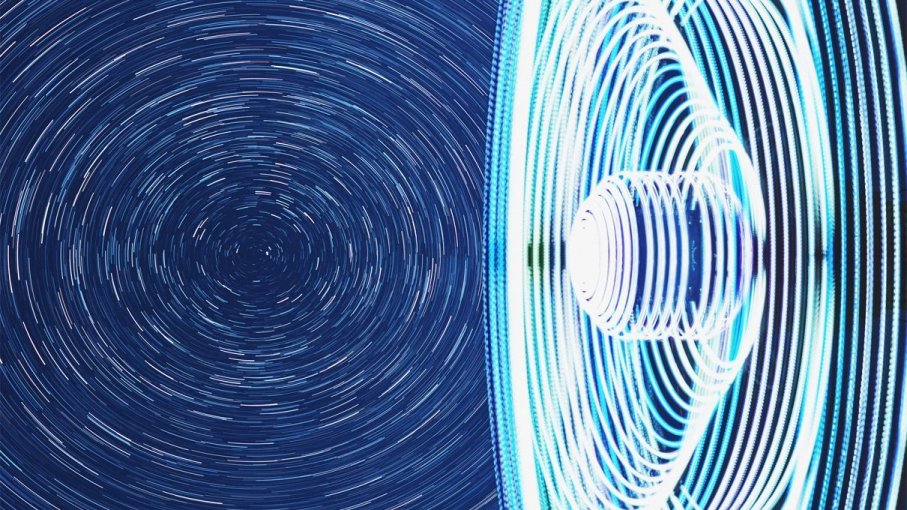Futuristic EM Drive Could Work — If It Can Defy the Laws of Physics

If you’re a NASA researcher and you want to create a frenzy across the internet, try publishing evidence that a space rocket could propel itself across the cosmos without burning any fuel, seemingly defying the laws of physics in the process. That’s a trick that not even the Starship Enterprise could pull off, even if it actually existed. But that’s pretty much what researchers from NASA’s Eagleworks Laboratories did.
Eagleworks is a branch of the Johnson Space Center in Houston, and researchers recently published a piece in the peer-reviewed Journal of Propulsion and Power titled “Measurement of Impulsive Thrust from a Closed Radio-Frequency Cavity in Vacuum.”
The article describes an experimental test of an electromagnetic drive, AKA an EM drive. First proposed by British scientist Roger Shawyer about 15 years ago, the EM drive is an asymmetrical chamber, in which microwave photons are forced to bounce around. Unlike a regular rocket engine, there’s no propellant burned, and no exhaust comes out of a funnel. According to our accepted understanding of how the physical world works, the EM drive shouldn’t be capable of pushing anything forward. Give this FW:Thinking podcast a listen for a little background:
“A working EM drive would violate Newton’s third law of motion, relativity, Noether’s theorem and a host of other extremely fundamental theories of physics,” says Rochester Institute of Technology astrophysicist and author Brian Koberlein via email. “We’d basically have to rewrite physics from scratch.”
Yet somehow, if the NASA scientists’ data is to be believed, the EM drive might actually work. Why all the fuss over something theoretical? If operable, the EM drive could make a trip to the moon a matter of a few hours, Mars less than three months, and Pluto under two years — significant improvements to our current capabilities. In the experiment, the device was placed in a spacelike vacuum and mounted on another device called a torsion pendulum, and then activated. According to the observations, the device produced about 1.2 millinewtons per kilowatt of energy put into it. That’s significantly stronger than the 6.67 micronewtons per kilowatt generated by solar sails, currently the preferred method of long-distance space propulsion.
How exactly the EM drive did this isn’t quite clear (some have posited it’s because of dark matter). In their paper, the NASA researchers (who didn’t respond to interview requests) seem to suggest that the microwave photons are pushing against a quantum plasma — particles that exist momentarily before vanishing from existence.
In an email, California State University Fullerton physicist James Woodward expressed doubts about that explanation. The NASA researchers’ paper “does not advance the theoretical proposals that purport to explain the appearance of thrust in these cavity based devices,” he says. “That is, the ‘radiation pressure’ and ‘quantum plasma’ proposals are not advanced by the results reported.” Woodward sent along a copy of a paper that he and colleague Heidi Fearn recently published in the Journal of the British Interplanetary Society, which details why the plasma idea won’t work.
Though he doubts the theory behind the EM drive, Woodward — who says he’s known one of the NASA researchers, Paul March, for nearly 20 years — was impressed by the quality of the experimental work that demonstrated the device generated thrust. “It was done carefully with adequate resources, and the reported thrust passed a number of tests that should have accounted for anything seen,” he says. “That elevates the experimental result to the status of an ‘anomaly,’ at least until some way of accounting for the result that makes sense is found. Anomalies are the potential precursors of interesting advances.”
Koberlein, though, remains unconvinced of the research’s value. “In science, a clear experimental result is the arbiter of truth,” he says. “I don’t think the team has remotely good evidence yet. They’ve taken a first step with a peer-reviewed article, but I don’t think it justifies spending public money on it at this point.”
On the other hand, if it turns out that further research shows that the EM drive does work — “a huge if,” as Koberlein put it — the device “would be one of the great inventions of history.”
“It would overturn centuries of physics at the very least, and, assuming the thrust could be scaled up, give us the solar system, if not the galaxy,” Koberlein says.



 Creators of mankind
Creators of mankind Description of “Tall white aliens”
Description of “Tall white aliens” Where they came from?
Where they came from? About hostile civilizations
About hostile civilizations The war for the Earth
The war for the Earth “Tall white aliens” about eternal life
“Tall white aliens” about eternal life Video: “Nordic aliens”
Video: “Nordic aliens” Aliens
Aliens Alien encounters
Alien encounters The aliens base
The aliens base UFO
UFO Technology UFO
Technology UFO Underground civilization
Underground civilization Ancient alien artifacts
Ancient alien artifacts Military and UFO
Military and UFO Mysteries and hypotheses
Mysteries and hypotheses Scientific facts
Scientific facts


















